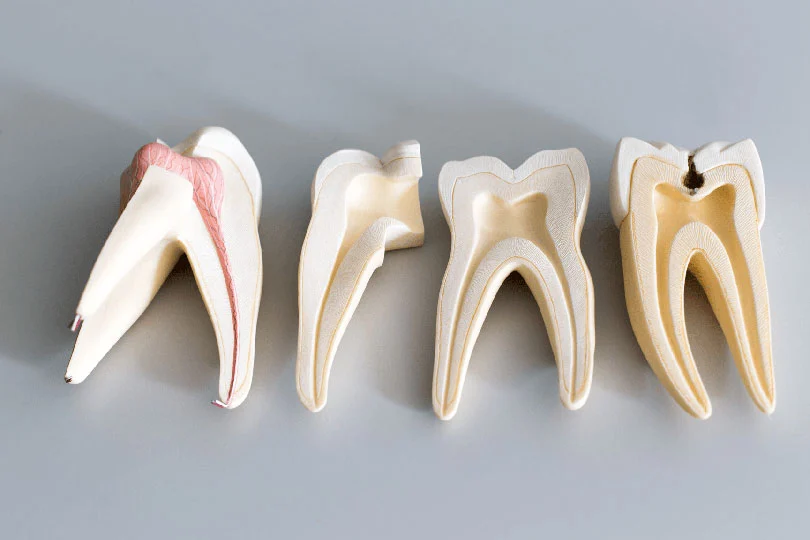When it comes to tooth pain, many people immediately think of a root canal as the go-to solution. However, this invasive procedure can cause anxiety due to the fear of pain, high costs, and lengthy treatment times. Fortunately, there are alternative treatments available that can provide effective relief without the need for drilling or extensive procedures.
In this article, we’ll explore the best alternatives to root canal treatment, focusing on non-invasive and natural options for managing tooth infections and alleviating pain. Whether you’re looking to avoid the drill or seek a more natural remedy, these alternatives could offer the relief you’re searching for.
What Is a Root Canal and Why It’s Done
A root canal is a dental procedure used to treat an infection or damage in the pulp of a tooth, which contains nerves and blood vessels. The process involves removing the infected pulp, cleaning the inside of the tooth, and sealing it to prevent further infection. This procedure is typically needed when there is an infected pulp, a tooth abscess, or deep decay that threatens the health of the tooth. If left untreated, the infection can spread, leading to more severe complications, such as tooth loss or the need for more extensive treatments. Root canals are essential for saving teeth and alleviating severe pain caused by infections.
Top 5 Alternatives to Root Canal Treatment

If you’re looking for alternatives to a root canal, you’re not alone. Many individuals seek less invasive solutions to avoid the discomfort, cost, or lengthy recovery time associated with traditional root canal treatment. Here are five top alternatives that can be effective depending on the severity of the condition.
1. Pulp Capping (Direct or Indirect)
Pulp capping is a technique used when the pulp of the tooth is only partially exposed and there’s no significant infection. In this procedure, a protective material is placed over the exposed pulp to promote healing and prevent further damage. This option is suitable for early-stage pulp exposure and can help save the tooth, avoiding the need for more invasive treatments like a root canal.
2. Tooth Extraction
When a tooth is severely damaged or decayed beyond repair, extraction may be the only viable option. After removal, the gap can be filled with a dental implant, bridge, or denture to restore function and aesthetics. While this is a more drastic measure, it ensures that the infection does not spread, and provides an opportunity for restoring oral health.
3. Ozone Therapy
Ozone therapy is a less common but promising alternative used in holistic dentistry. It involves the use of ozone gas to kill bacteria in the early stages of infection, helping to prevent further damage to the tooth. This non-invasive treatment is most effective when the infection has not yet reached the nerve, offering a natural solution to manage dental infections.
4. Laser Therapy / Biostimulation
Laser therapy, or biostimulation, is a minimally invasive treatment that can be used in the early stages of tooth infections. While it’s not a complete substitute for a root canal, it can be very effective in controlling pain, reducing inflammation, and promoting healing. It works by stimulating the tissue at the site of infection, providing relief and potentially avoiding more invasive procedures.
5. Watchful Waiting + Remineralization (For Reversible Pulpitis)
For cases where the pulpitis is reversible and the infection hasn’t yet reached the nerve, a “watchful waiting” approach can be an effective solution. This involves using fluoride treatments or calcium phosphate pastes to remineralize the tooth and encourage healing. It’s a conservative approach that can sometimes reverse the early stages of pulpitis, potentially avoiding the need for a root canal.
Root Canal vs. Alternatives: Pros & Cons Table
When considering treatment options for tooth infections, it’s important to weigh the benefits and drawbacks of each. Root canals and their alternatives vary in terms of invasiveness, long-term success, and ability to preserve the natural tooth. Here’s a comparison table to help you better understand the pros and cons of each option:
| Treatment Option | Invasiveness | Long-term Success | Preserves Tooth? |
| Root Canal | Moderate | High | Yes |
| Extraction | Low/High | With implant | No |
| Pulp Capping | Low | Case-dependent | Sometimes |
| Laser/Ozone Therapy | Low | Experimental | Sometimes |
When an Alternative to Root Canal Might NOT Be the Right Choice
While alternatives to a root canal can be effective in certain cases, there are situations where opting for them may not be the best choice. In some instances, delaying proper treatment or choosing a less invasive option could lead to more serious complications in the long run. Here are a few scenarios where an alternative to root canal might not be the right choice:
- Cases of deep infection or abscess: If the infection has reached deep into the tooth or caused an abscess, alternatives may not effectively address the severity of the issue.
- Risks of spreading infection: Without the proper intervention, the infection can spread to surrounding tissues, bones, or even the bloodstream, leading to more serious health risks.
- False economy: Skipping a root canal in favor of a less invasive option may seem cost-effective at first, but it could result in more expensive treatments down the line if the infection worsens.
Skipping proper treatment can lead to tooth loss, bone loss, or systemic infection, which can be far more costly and difficult to treat in the future.
Get a Professional Evaluation Before Deciding
Before deciding on a root canal or an alternative treatment, it’s crucial to get a professional evaluation from a qualified dentist. Each case is unique, and an accurate diagnosis is essential to determine the most effective solution. Here’s why a professional evaluation is important:
- Importance of X-rays and pulp vitality tests: These diagnostic tools are essential for determining the extent of the infection and the health of the tooth pulp, helping your dentist make an informed decision about the best course of action.
- Not all general dentists offer advanced alternatives: Some alternatives, like ozone therapy or laser treatments, may not be available at every dental office. It’s important to seek a dentist who is equipped with the latest techniques.
- Find a specialist who offers conservative AND conventional options: A specialist who offers both advanced and traditional treatments ensures that you have all your options available, allowing you to choose the best path for your specific condition.
At Aesthetic Airways, we evaluate each case individually to offer either traditional treatment or a reliable alternative to root canal—when appropriate.
When it comes to dental health, exploring alternatives to a root canal can be beneficial, but it’s important to make an informed decision. Root canal treatment is not always the enemy; sometimes it’s the best solution to save your tooth and relieve pain. However, patients should feel empowered to ask their dentist about all possible options before proceeding.
Think you might need a root canal but want other options? Book a consultation with our experienced dental team to discuss safe, personalized alternatives to root canal treatment and preserve your smile without the stress.

